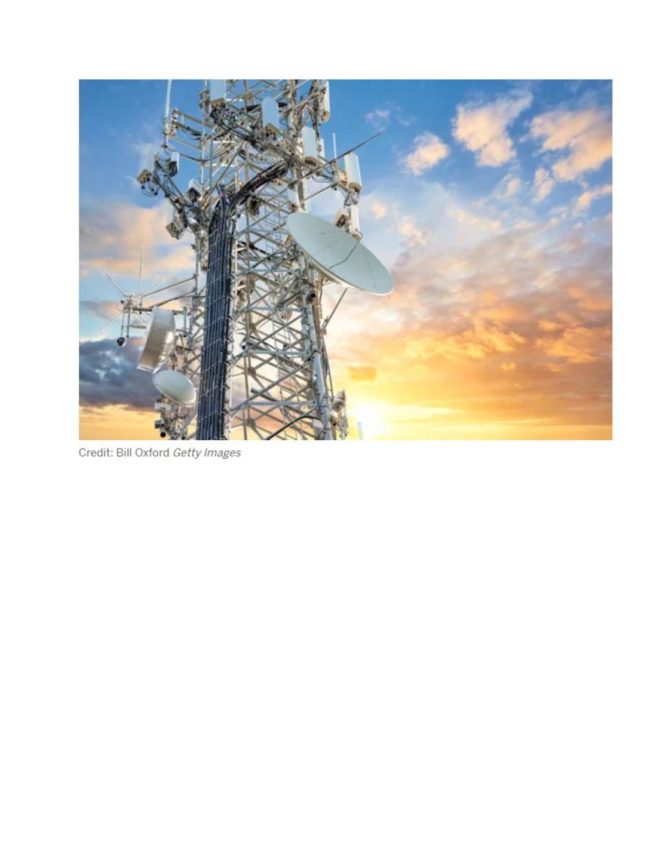We always run after technology for our comfort and many a times becoming almost slave to technology. Similar is the case with communication technological advances. Though, need for high speed, large and efficient data base management is the demand of time with the growing expectations and applications of electromagnetic (EM) radiations which have already progressed from its versions of 1G to 5G. In spite of the growing need, people are now feeling concerned not only about their ill health effects but also interference with electronic technology. In a recent development, with the installation of 5G use at US airports, many countries have halted flights from their countries to US in a fear that 5G EM waves may interfere with the electronic systemof planes leading to unwanted outcomes. This article will explore the possible dangers of 5G radiations in every respect.
5G works by using higher frequencies on the electromagnetic spectrum. The frequencies range from 3.5 gigahertz (GHz) to several tens of GHz. 5G is the latest network of wireless technology to be used to transmit data between appliances, like mobile phones and Bluetooth devices. This is expected to support the increasing number of electronic devices and services, including:
- self-driving cars
- virtual reality appliances
- telemedicine
- remote surveillance
- telesurgery
At these higher frequencies, 5G networks will use a greater number of base stations and of connected objects. 5G will further employ beam-forming antennas to focus signals more efficiently towards the device in use, rather than having the signal spread in broad directions as in current base station antennas.
5G works by producing a type of energy called electromagnetic radiation. It uses higher frequencies than previous wireless networks, making it faster and more efficient. The latest cellular technology, 5G, will employ millimeter waves for the first time in addition to microwaves that have been in use for older cellular technologies, 2G through 4G. Given limited reach, 5G will require cell antennas every 100 to 200 meters, exposing many people to millimeter wave radiation. Millimeter waves are mostly absorbed within a few millimeters of human skin and in the surface layers of the cornea. Short-term exposure can have adverse physiological effects in the peripheral nervous system, the immune system and the cardiovascular system. The research suggests that long-term exposure may pose health risks to the skin (e.g., melanoma), the eyes (e.g., ocular melanoma) and the testes (e.g., sterility). 5G also employs new technologies (e.g., active antennas capable of beam-forming; phased arrays; massive multiple inputs and outputs, known as massive MIMO) which pose unique challenges for measuring exposures.
The telecommunications industry and their experts always criticize the scientists in general and medical scientists in particular who come up with research data regarding the side effect of cell phone radiation over the advent of wireless technology’s advance versions like 5G. But it is the ethical responsibility of scientists to inform the public about what the peer-reviewed scientific literature tells us about the health risks from wireless radiation. Many scientific studies on the biologic and health effects of non-ionizing electromagnetic fields (EMF) have already found harmful biologic or health effects from exposure to RFR at intensities too low to cause significant heating. Numerous recent scientific publications have shown that EMF affects living organisms at levels well below most international and national guidelines. Effects include increased cancer risk, cellular stress, increase in harmful free radicals, genetic damages; structural and functional changes of the reproductive system, learning and memory deficits, neurological disorders, and negative impacts on general well-being in humans. Damage goes well beyond the human race, as there is growing evidence of harmful effects to both plant and animal life. The World Health Organization’s International Agency for Research on Cancer (IARC) classified RFR as “possibly carcinogenic to humans” in 2011. Last year, a study conducted by the U.S. National Toxicology Program (NTP) found “clear evidence” that two years of exposure to cell phone RFR increased cancer in male rats and damaged DNA in rats and mice of both sexes. Thus, new exposure limits are needed which account for these differential effects. Moreover, these limits should be based on a biological effect, not a change in a laboratory rat’s behavior.
The electromagnetic radiation used by all mobile phone technologies has led some people to worry about increased health risks, including developing certain types of cancer. Since 5G is a new technology so there is no research on health effects; however, we have considerable evidence about the harmful effects of 2G and 3G. Little is known the effects of exposure to 4G, a 10-year-old technology, because governments have been remiss in funding this research. 5G will not replace 4G; it will accompany 4G for the near future and possibly over the long term. Electromagnetic frequencies, like those produced by 5G, create an area called an electromagnetic field (EMF) and it is believed that EMFs have negative health effects and as a result, there is concern about how 5G affects health. If there are synergistic effects from simultaneous exposures to multiple types of RFR, our overall risk of harm from RFR may increase substantially. Cancer is not the only risk as there is considerable evidence that RFR causes neurological disorders and reproductive harm, likely due to oxidative stress.



